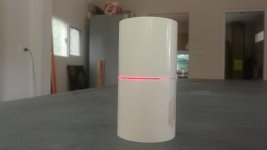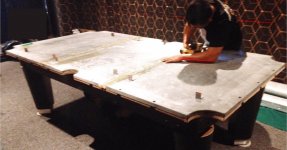In the end I bought a Bosch GLL 3-80 - accurate to 0.2mm per meter. So if I place it by the side pocket, the receiver will never be more that 2 metres away from the lazer - max 0.4mm variance, according to the manufacturer specs.
But as mentioned above the thing that the beam shines on is very important as the width of the beam is around 3mm (1/8"). I've tried several different types of receptor material, so far white plastic pipe with a black line around it works ok but suffers from glare. sometimes the black line just dissapears.
I think you need a material that will absorb some of the red light, and make the black line stand out, I also think you need two black lines, one at the top of the beam and one at the bottom to give you better reference. Or possibly something made with projector screen tape that absorbs light, could work.
I undertsand Starrett levels are more accurate, but with the laser if you have multiple receivers you can a quick visual guide to the levelness of the slate that would take a fair bit of figuring out with a Starrett level. So they are useful in a different way, not better.
There is no doubt laser have their uses. In this particular case I believe a quality machinist level is a far, far better for doing the job of leveling a pool table. How do you verify the accuracy of a laser if you drop it? A level you put on a flat level surface, read it, then simply turn it 180 degrees and read it again to quickly verify accuracy. I use my laser level more as a transit, the level on my laser is for making sure the tool is relatively level or for repeating set up angles. It would require much more effort to shoot that line to different points of a flat surface to check degree of level than just grabbing an accurate machinist level to do the same thing.
Last edited:

